|
|
Art View
|
|

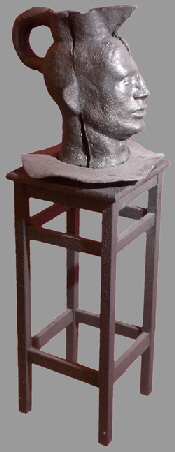
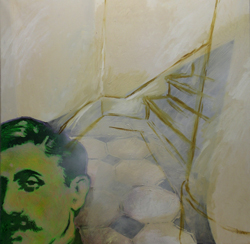
|
"Art at the Birshof"
The opening of one's own art show must be a rather dubious event for any artist. A certain choice of works is being made in the studio, packed up, transported, unwrapped again, positioned and repositioned at the exhibition place. If all goes well, one can find a successful positioning of the art works which corresponds to the planned project and is up to the expectations and wishes of the participants, within a reasonable time frame before the opening. The perfect presentation of art exists mainly as an abstract idea. When I walk through the presentation of Andreas Jaeggi's paintings, drawings and objects, I notice that it is neither a thematical showing, nor a "Best Of". The latter is also known as a "retrospective", but frankly, I find Andreas Jaeggi yet too young for such a look backwards and he is too much in the middle of his creative process. On the other hand, the show is not a presentation of exclusively new works either. A quite different concept must be behind this exhibition at the Hirslanden Clinic Birshof and I shall try to examine some of his ideas that lie behind what we can see.
Andreas Jaeggi is also a professional opera and concert singer ... as well as an avid ice figure skater. Whenever he travels from place to place (he sings regularly a.o. in France, Holland, England, Switzerland, Austria and Italy) the painting ustensils and ice skates are his trusty traveling companions tucked inside his luggage. From these few facts alone one can deduce several interesting points. First of all, Andreas Jaeggi seems to be someone who is in search of intellectual as well as physical challenges. Second, his visual work must be inspired in a specific manner by his extensive being on-the-road. Third, it is apparent that his artistic expression is taking place on numerous levels. I could expand further but I don't want to lengthen today's introduction into a series of lectures, I therefore keep my observations concentrated on a closer look at these three points.
Concerning the intellectual argument: Andreas Jaeggi does not consider himself a "well-read person" (despite the fact that this conclusion would be obvious as he comes from a family of booksellers), but through the studies of endless opera libretti he is perfectly familiar with historical literature. Operas are often canonical in content which serves well in transporting basic human themes through the centuries and presenting them in up-to-date versions. He digests these stories, then regurgitates them visually by isolating certain motifs and at times translates them into something rather humorous. The sculpture "From the Salome Excavation" chooses as a central theme the biblical story of "Salome" in Oscar Wilde's play and respectively in Richard Strauss' operatic version. Andreas Jaeggi connects Jochanaan's chopped off head with the prophet's destiny, having been captured in a water well (which also makes me think of the German saying: "The jug goes to the water fountain until it breaks."). In addition, he comments on Salome's senseless and outrageous extravagance, demanding Jochanaan's head to fulfill her own blind lust as well as on her stepfather Herod's allowing this request to be executed. And not incidentally, this story is certainly about more than just ONE broken existence.
Marcel Proust appears ghostlike here and there in the paintings. He symbolizes, I suspect, the nameless hero narrator in "In Search of Lost Time". The main figure is an eternal seeker as well as an eternally distracted being who will never ever create the work he intends to produce. Andreas Jaeggi's intellectual dispute with history and stories can be traced through many series of his works. "The Mona Project" is a series of twenty-one drawings, all based on the "Giogonda", better known as the "Mona Lisa" by Leonardo da Vinci. Andreas Jaeggi adapts and handles this iconic painting with fun and gusto as well as with astuteness, by replacing the head of the mysterious (and disputable) beauty with the portraits of Barbra Streisand, Pipi Longstocking, Mao Zedong, Sigmund Freud or – you guessed it already – Marcel Proust. The background – equally famous in art historian circles – he adjusts according to the depicted personality.
|
|
 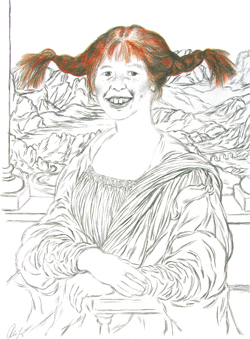   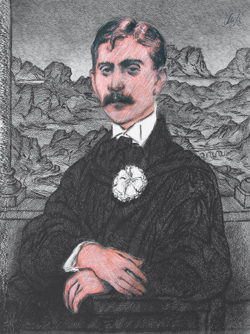
|
|
|
How is Andreas Jaeggi's visual work influenced by his traveling? Of course, there are practical restrictions concerning size and painting techniques. More importantly and more thrilling to me, however, is his specific approach to the pictorial which can be observed. Whenever he returns to familiar places, he is drawn to repetitive reproductions of cherished views and outlooks. Andreas Jaeggi has coached himself towards developing (or has been able to maintain) an incredible openness, which guides him to paint and draw the same back side of a building, the same staircase again and again. Some examples of these numerous cityscapes of Paris, Basel and New York can be seen in this exhibition. Whether his last visit to these places happened one day ago or dates back several years, these motifs affect him in a new way each time. He observes anew, imprints the minutest details within his brain, returns to his temporary place of stay and translates these impressions into a picture. He finds interesting motifs worthy of translating in seemingly trivial corners, places any decent vacation traveler probably wouldn't even notice or bother to throw a sideways glance. By embodying the world around him in such a manner, I presume Andreas Jaeggi creates trustworthy surroundings for himself, perhaps a feeling of being at home.
|
|
|
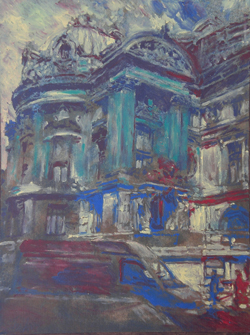 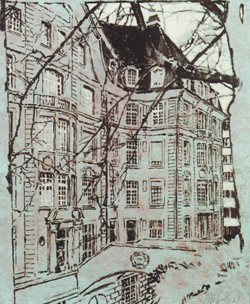 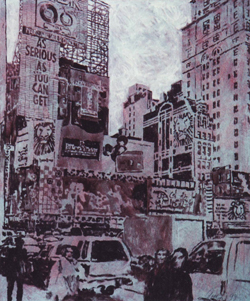
|
|
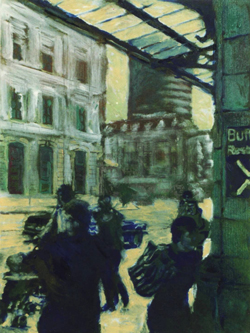
|
Andreas Jaeggi wants to reproduce his living space as realistically as possible. But this for him is not just a simple matter of reproducing architecturally correct proportions. Whoever is familiar with the basic rules and regulations of perspective is able to relatively quickly produce a so-called realistic reproduction. I think logic and a systematic approach would not only be inappropriate means for Andreas Jaeggi, they would also be too comfortable and easy, not inspiring enough (from Latin "spiritus": spirit, breath, enthusiasm, life). The artistic demands he makes of himself: to gather personal experiences through body and mind, and then to reshape and express them in a different form. His artistic work depicts the world as it is real to him.
|
|
Which leads me to the third, overlapping and central point of my observations. Personal expression stands behind and above each and every one of Andreas Jaeggi's artistic activities. Be it in his singing, in his figure skating or in his painting – the artist finds inspiration in his daily life, in casual encounters and simple moments, not in spectacular landscapes, neither in political meddling nor in "cutting edge Art Concepts". His works are radically self-referred – which I mean in a sense of modest self-sufficiency. His art is lust for life, it is lust for experimentation and exploration; it has strength of individual expression.
|
|
I can perhaps compare this art exhibition to a musical "Medley", a medley full of personal remembrances and "Leitmotifs". How beautiful that the walls and spaces of the Hirslanden Clinic Birshof may resound with the echo of this Andreas-Jaeggi-Medley for several months!
|
|
By Susanne Blaser, Art Historian M.A.
|
|
Exhibition: "Art at the Birshof"
Hirslanden Clinic Birshof in
Muenchenstein/Basel (Switzerland)
|
|